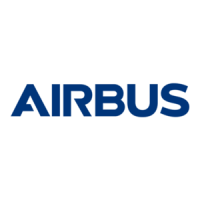A320 INSTRUCTOR SUPPORT
NORMAL OPERATION
DATE: JAN 2001 Page 82 UDY0102
16 - ETOPS
! Background
ETOPS stands for
E
xtended range
T
win engine aircraft
OP
eration
S
.
ETOPS describes the operations of Twin Engine A/C over routes that contain waypoints located further than one hour
flying time from an adequate airport at one engine inoperative cruise speed.
The ETOPS regulations are applicable to overwater or overland operations and to all revenue flights with passengers
or freighters.
The purpose of ETOPS regulations is to provide a greater flexibility in twin engine aircraft operation while maintaining
a high level of safety.
In the 80’s ICAO formed an ETOPS study group to examine the flexibility of extended range operation, while the FAA
begun the design of AC 120-42 which defines the US criteria for ETOPS.
During the 80’s and 90’s the various aspects of ETOPS criteria have been thoroughly reviewed by the industry allowing
now to consider over 180 mn ETOPS (up to 207 mn is proposed by the US to day, for obvious reasons...!).
! Regulatory Aspects of ETOPS
The purpose of the regulations is to ensure that twin engine A/C operating under ETOPS are at least as reliable as the
existing 3 or 4 engine A/C.
The regulations cover 2 aspects:
a) The A/C ETOPS type design approval.
The A/C manufacturer has to demonstrate that the A/C complies with the ETOPS design criteria. Any changes required
to the A/C basic design are contained in the “Configuration, Maintenance and Procedure Standards” (CMP) which is an
authority approved document.
Design considerations cover the following issues:
→ Propulsion System Reliability,
→ Electric power redundancy and distribution consideration,
→ APU design,
→ Single Engine operation with adequate system redundancy,
→ Ice protection for engine and air frame,
→ all system safety assessment to take into account the max diversion time,
→ adequate fire extinguishing system for cargo and
→ crew workload consideration under failure conditions.
The ETOPS capability assessment is done by the Airworthiness Authorities who analyze the IFSD rates (In Flight Shut
Down) and all in-service events in order to grant the Maximum allowed ETOPS diversion time for the candidate A/C.
The A320 family is granted 120 mn with all installed engines. A319CJ is planed to be granted 180 mn in 2001. Up to
now, no airline has officially requested for the A320 family an extension of the diversion time up to 180 mn.

